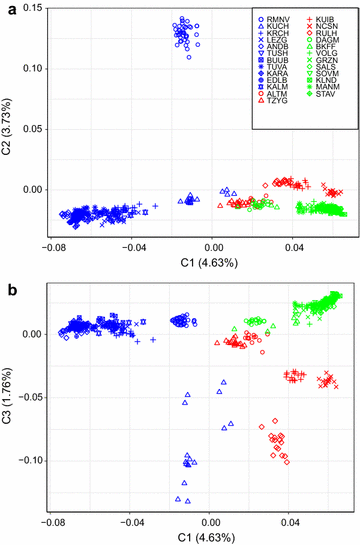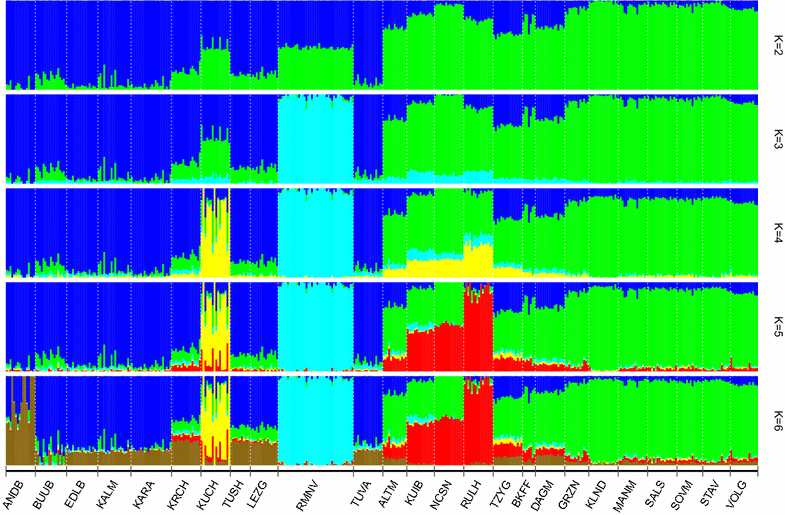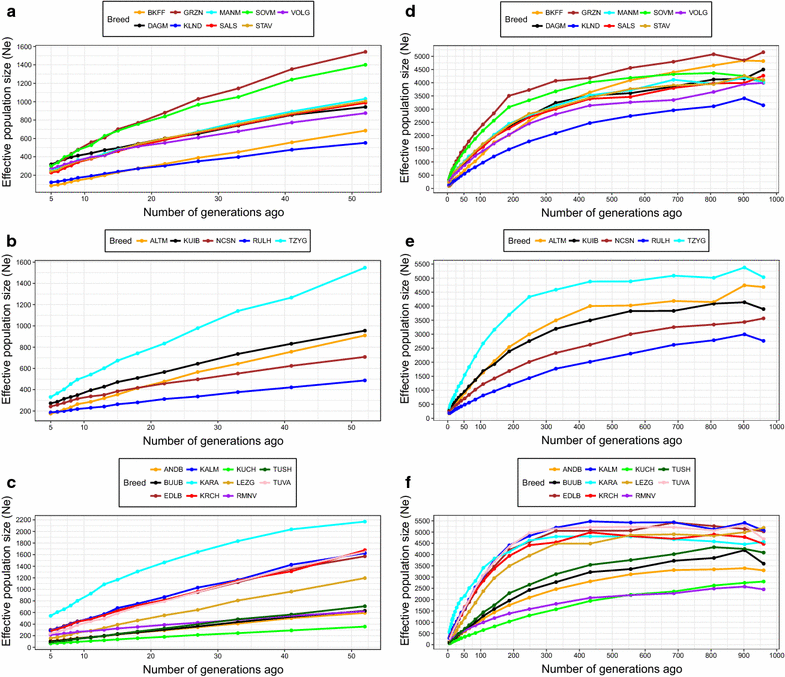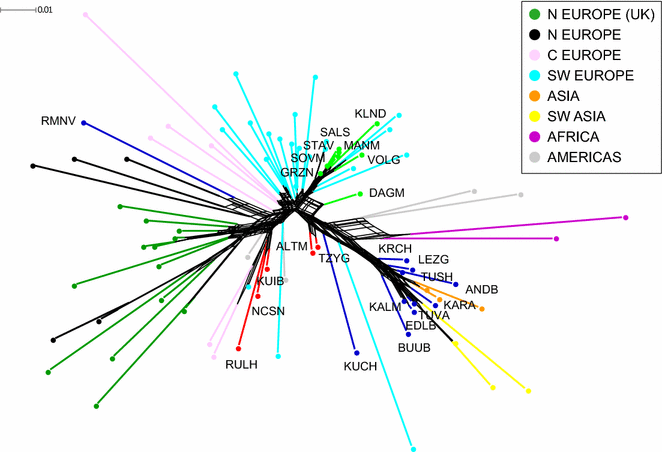Population structure and genetic diversity of 25 Russian sheep breeds based on whole-genome genotyping
- PMID: 29793424
- PMCID: PMC5968526
- DOI: 10.1186/s12711-018-0399-5
Population structure and genetic diversity of 25 Russian sheep breeds based on whole-genome genotyping
Abstract
Background: Russia has a diverse variety of native and locally developed sheep breeds with coarse, fine, and semi-fine wool, which inhabit different climate zones and landscapes that range from hot deserts to harsh northern areas. To date, no genome-wide information has been used to investigate the history and genetic characteristics of the extant local Russian sheep populations. To infer the population structure and genome-wide diversity of Russian sheep, 25 local breeds were genotyped with the OvineSNP50 BeadChip. Furthermore, to evaluate admixture contributions from foreign breeds in Russian sheep, a set of 58 worldwide breeds from publicly available genotypes was added to our data.
Results: We recorded similar observed heterozygosity (0.354-0.395) and allelic richness (1.890-1.955) levels across the analyzed breeds and they are comparable with those observed in the worldwide breeds. Recent effective population sizes estimated from linkage disequilibrium five generations ago ranged from 65 to 543. Multi-dimensional scaling, admixture, and neighbor-net analyses consistently identified a two-step subdivision of the Russian local sheep breeds. A first split clustered the Russian sheep populations according to their wool type (fine wool, semi-fine wool and coarse wool). The Dagestan Mountain and Baikal fine-fleeced breeds differ from the other Merino-derived local breeds. The semi-fine wool cluster combined a breed of Romanian origin, Tsigai, with its derivative Altai Mountain, the two Romney-introgressed breeds Kuibyshev and North Caucasian, and the Lincoln-introgressed Russian longhaired breed. The coarse-wool group comprised the Nordic short-tailed Romanov, the long-fat-tailed outlier Kuchugur and two clusters of fat-tailed sheep: the Caucasian Mountain breeds and the Buubei, Karakul, Edilbai, Kalmyk and Tuva breeds. The Russian fat-tailed breeds shared co-ancestry with sheep from China and Southwestern Asia (Iran).
Conclusions: In this study, we derived the genetic characteristics of the major Russian local sheep breeds, which are moderately diverse and have a strong population structure. Pooling our data with a worldwide genotyping set gave deeper insight into the history and origin of the Russian sheep populations.
Figures







References
-
- Vigne JD, Carrère I, Briois F, Guilaine J. The early process of mammal domestication in the near east: new evidence from the pre-neolithic and pre-pottery neolithic in Cyprus. Curr Anthropol. 2011;52:S255–S271. doi: 10.1086/659306. - DOI
-
- IWTO Market Information, FAOSTAT. http://www.fao.org/faostat/en/#home. Accessed 15 Sept 2016.
-
- Lescheva M, Ivolga A. Current state and perspectives of sheep breeding development in Russian modern economic conditions. Econ Agric. 2015;62:467–480.
Publication types
MeSH terms
Grants and funding
LinkOut - more resources
Full Text Sources
Other Literature Sources

